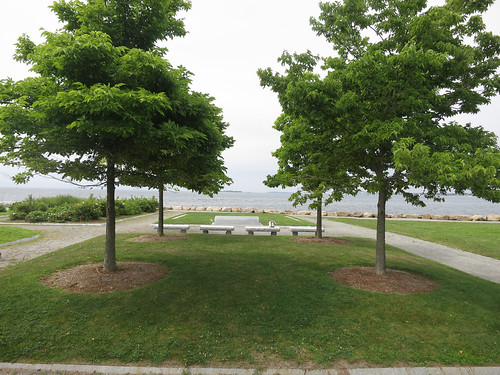
Living memorials serve as a reminder of fathers and mothers, sons and daughters, brothers and sisters, neighbors and friends—but also of the power of community to reflect, rebuild and renew. Our research suggests that living memorials demonstrate the role of nature in contemporary times not only as a symbol, but as an innate and purposeful response to loss that calls forth a common humanity and compassion for others.
In other words, they demonstrate how people use nature to be resilient to loss.
For 13 years, the U.S. Forest Service has built upon a unique partnership called the Living Memorials Project centered on one of the most significant events in recent history: Sept. 11, 2001, also referred to as 9/11, the day four carefully coordinated terrorist attacks on U.S. soil. That day, two passenger planes hit the World Trade Center’s twin towers in New York City, another flew into the Pentagon in Washington, D.C., and a fourth originally targeting Washington crashed in a Shanksville, Pennsylvania, field after passengers tried to stop the hijackers.

The living memorials project began in 2002 when Congress asked the Forest Service to create a program that draws upon the resonating power of trees to bring people together and help foster healing in communities across the nation in response to 9/11. The project includes a grant program to support community-based greening efforts and a research component that developed a National Registry of living memorials across the country.
This year, as communities gather to mark the 14th anniversary of 9/11, some will do so at local town memorial parks and gardens – living memorials that pay respect to those who lost their lives and thank thousands more who ran toward the chaos to help. This summer, a team from the agency’s Northern Research Station set out to revisit some of the sites listed on the Living Memorials Registry. Joined by Heather McMillen, an anthropologist and postdoctoral social scientist with the research station, the teams were curious to learn if the sites were maintained. If so, who takes care of them? Did circumstances and other events change the nature of the memorials or had they, over time, stood still? What story could the trees and the landscape itself tell us?

The sites range from forests such as Sterling Forest State Park in Tuxedo, New York. To beaches, like the Hometown Memorial in the Town of Babylon, New York, as well as city parks, community gardens, traffic islands, waterfront piers, street trees and arboretums.
Many of the living memorial sites we visited 14 years ago still remain and continue to serve an important role for their local constituents. When asked, ‘What are you most proud of here?” nearly all of the site stewards responded, “That we did it. And it’s still here.”
Many of the living memorials along the New York/New Jersey/Connecticut coast sustained heavy damage during Hurricane Sandy and were rebuilt and replanted. Some signs at the sites not only recognize a diverse list of supporters but also tell the story of that day from the perspective of local towns and communities, including personal sentiments regarding loved ones lost and for those who survived.
In each case, local residents draw upon the landscape to create a place of comfort, reflection and a sense of beauty. As these places age, some areas do struggle with care and maintenance but are not giving up. Many families have planted survivor trees on sites and are eager to find ways to protect them as long as possible.
Updates from the field will be available on the Living Memorials Project website. Memorials created from 2001-2004 are displayed on a National Map that formed the basis of the public multi-media exhibition Land-Markings: 12 Journeys through 9/11 Living Memorials, created in collaboration with Parsons The New School for Design. The exhibit was on display in 2006 at the National Park Service’s Federal Hall National Memorial on Wall Street. The exhibit catalog and DVD are available free for public use. Videos can be viewed online.




